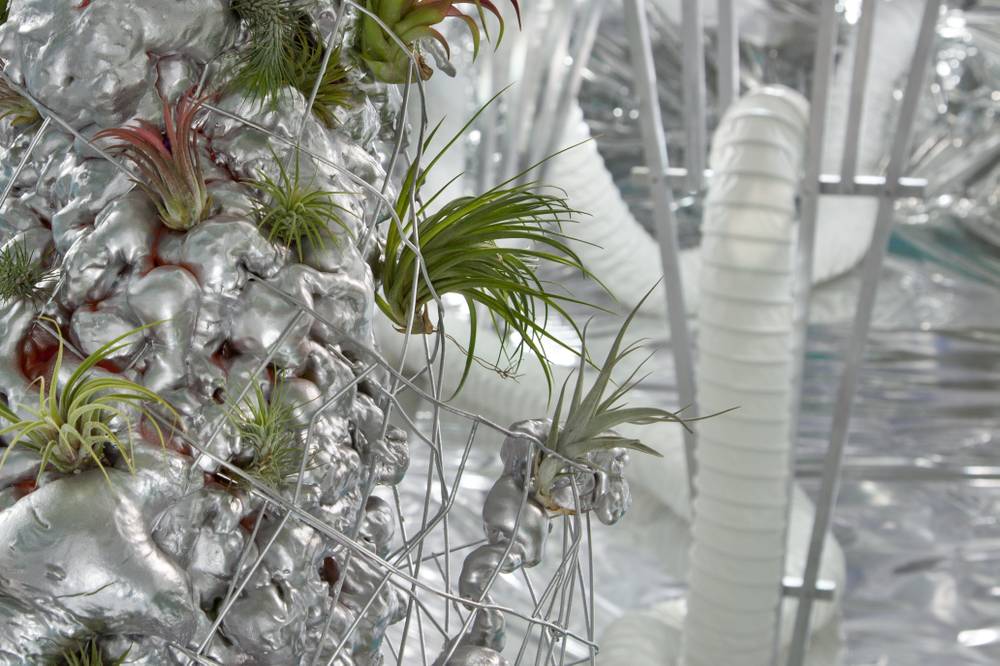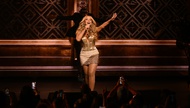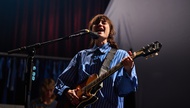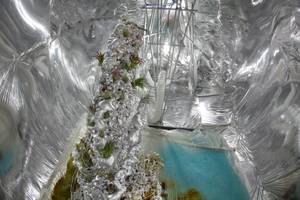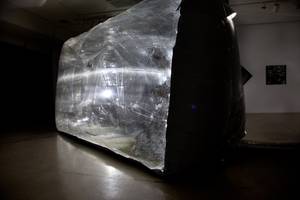
Cannibals, Survivalists and the Plus Ultra Habitat Through February 2; Thursday and Friday, 2-5 p.m.; Saturday and Sunday, noon-6 p.m. Contemporary Arts Center, 496-0569.
At a moment when organic material is gaining, ahem, ground in contemporary art, Nathan Coté’s Cannibals, Survivalists and the Plus Ultra Habitat is on-trend. Quirky, fascinating and disturbing, the exhibition at Contemporary Arts Center stages the dreary facts: Water supplies are dwindling, extinction continues apace and nature needs nurture to survive. But in a comic reversal, the takeaway from the show is that—silly us!—human beings are the ones who are disappearing. We’re not witnessing it; we are it.
The “survivalist” pod says it all. It’s a giant, inflated bubble of a thing: 16 feet long, 8 feet wide and 8 feet tall. It fills the CAC space like a wayward bladder from a sci-fi film. Built from metalized Mylar emergency blankets and clear plastic, the pod is intubated with its own humming air supply. Visitors entering the gallery admire the backside of its silver, dimpled form on the way to the viewing window, where they’re met with the shiny sight of its provocative silvery innards.
At one end of the habitat, rationalism reigns, the strong, straight lines of a Lowe’s trellis tower supporting the (grow) light of reason. At the other perches a globby mound of silver industrial foam, a structure that manages to recall the crenellations of both brain and intestines while claiming distant kinship with outsize African anthills. Cute air plants, Coté’s “survivalists,” nestle in its folds. The plants are equipped with a bowl of chia (a superfood vetted by the Survivalist movement) at the base of the mound. But the symbiotic relationship between civilization and nature, man-made and organic, looks a wee bit messy. On the pod floor, Coté scattered self-watering crystals, some a deep urine yellow, others a Hockney blue. It adds color, but it’s not conventionally pretty.
More color is reflected by the glossy “cannibals” on the adjacent wall—photographs of vegetables past their sell-by date, consuming themselves in order to survive. Shot against an extravagant foil backdrop faceted with color and light, the turnip, for example, is more of a bejeweled showgirl posing for the camera than a rotting root producing a new shoot—an ordinary object made extraordinary.
Comic exaggeration is at work throughout the show—gaudy, exhibitionist, vegetal excess on the wall; bunker-mentality hyper-minimalism in the pod. But the joke’s on us. We’re reflected in the self-watering crystals, the glossy photos, the tower and mound, and especially in the Mylar. Our ghostly presence in the pod mirror is a reminder that if we can’t resolve the escalating problems generated by a post-natural world, maybe we don’t have a place in it at all.
